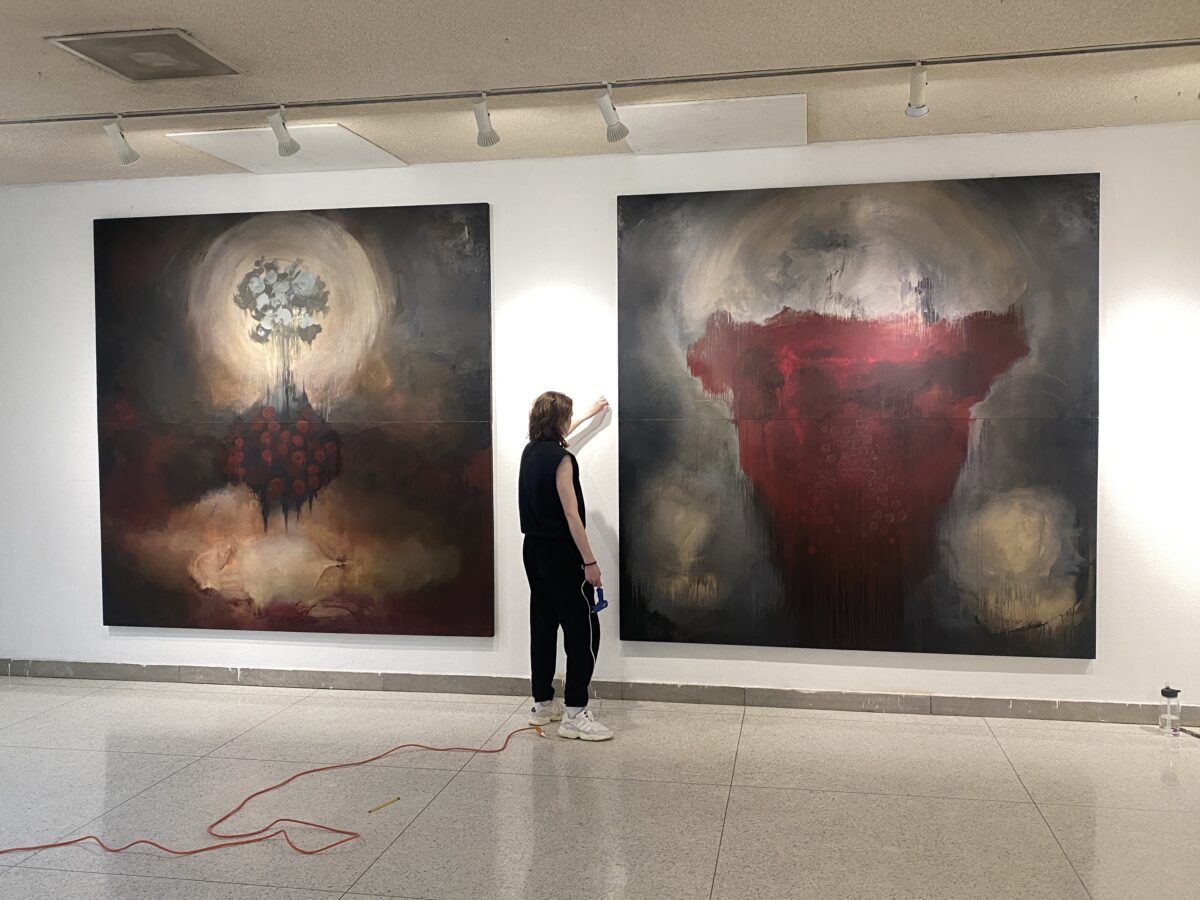
When Biology and Art Collide: The Beauty of Science
Assistant Professor Mahita Kadmiel remembers being impressed by Allison Crouch ’23 right away. “She was my student in FS Biology. She was an art major, and a biology minor, so her lab work was on a volunteer basis. She was very dedicated. Because I have an interest in art, we communicated really well.”

Kadmiel says as a biologist, she feels the need to communicate to audiences in a way they can understand. She jokes that her students might not understand at first why they are required to manually draw cells, and other anatomical structures. “But once they get over the hurdle of thinking they cannot draw, the illustration helps them remember what they need to know so much better than taking a photograph. And under a microscope, biology is a thing of beauty,” says Kadmiel.
Crouch says, “I think I’ve always been an artist before a scientist because I’m so good at narrative advising and anthropomorphizing biology because there’s so much to look at and apply to a human lens. Biology itself is an art – the things that our cells do are art, and are so masterfully detailed in a way that we can’t even really understand.”
Kadmiel sees art in biology every day. “For example, there are three different kinds of proteins in a cell and we want to look at all of them where they are located within a cell. We have technology to label them with different tags that would have different colors. So you would take the three pictures of the same cell with one tag at a time. But because we can tag the colors with different colors you merge the three images like in Photoshop you overlay them you get one image with three colors and the colors will tell you where these three different proteins are located. So that’s like painting something on a piece of canvas and saying okay the tree is green. The ocean is blue.”
Kadmiel and Crouch talked a lot about art during her lab time. She was focused on HIV viruses, and her interpretation of the handling of that epidemic was reflected in paintings she created. Kadmiel figured that hanging art in the Steffee Hall was a good way to inspire young scientists and help them make the connection between art and science.
The assistant professor admits she was thrilled when she learned that Crouch agreed to install her pieces for others to enjoy. “They look beautiful here on the second floor. As a matter of fact, they recently acted as a visual representation of how interdisciplinary we are at Allegheny. I brought up our blend of art and biology during a faculty search process, and it really described who we are,” says Kadmiel.
Crouch loves that her work is hanging in a life sciences building for posterity. “Those paintings are about incredible historical breakthroughs in the battle against AIDS. It’s really gratifying to me that maybe my work might inspire other scientists.”
Crouch is currently working at the National Institutes of Health as a Postbaccalaureate Research Fellow, where she studies flaviviruses and immunology. Her days are filled with considering approaches to tackle the Zika virus, Dengue fever and yellow fever. And though Crouch the scientist is more focused on her microscope than her paints these days, she appreciates her Allegheny experience.
“Being creative is important when it comes to conveying information. Whether it be for a presentation or any kind of marketing of your ideas, any major should consider understanding art,” says Crouch. Kadmiel agrees, saying, “Really, you can incorporate art into any discipline.”